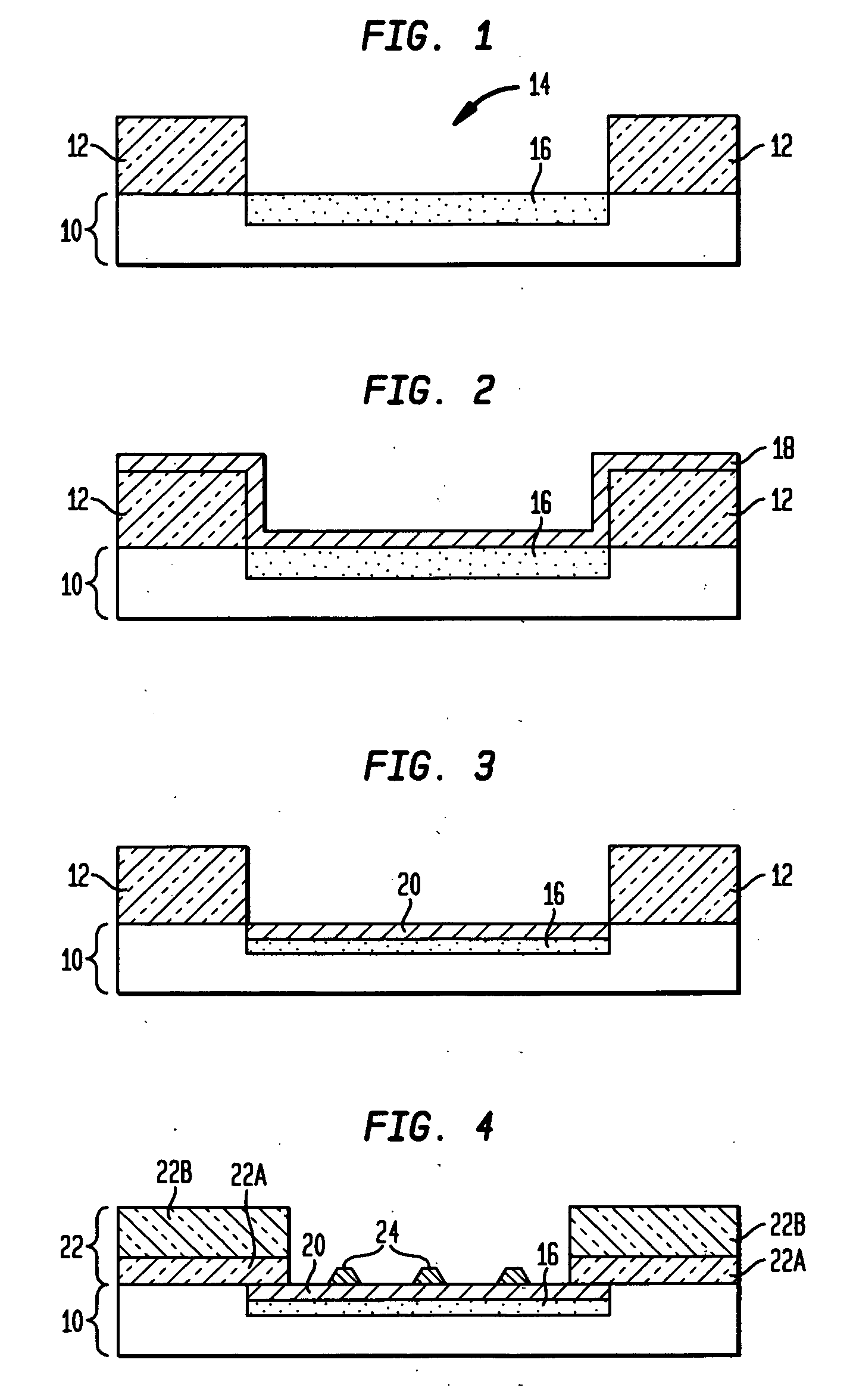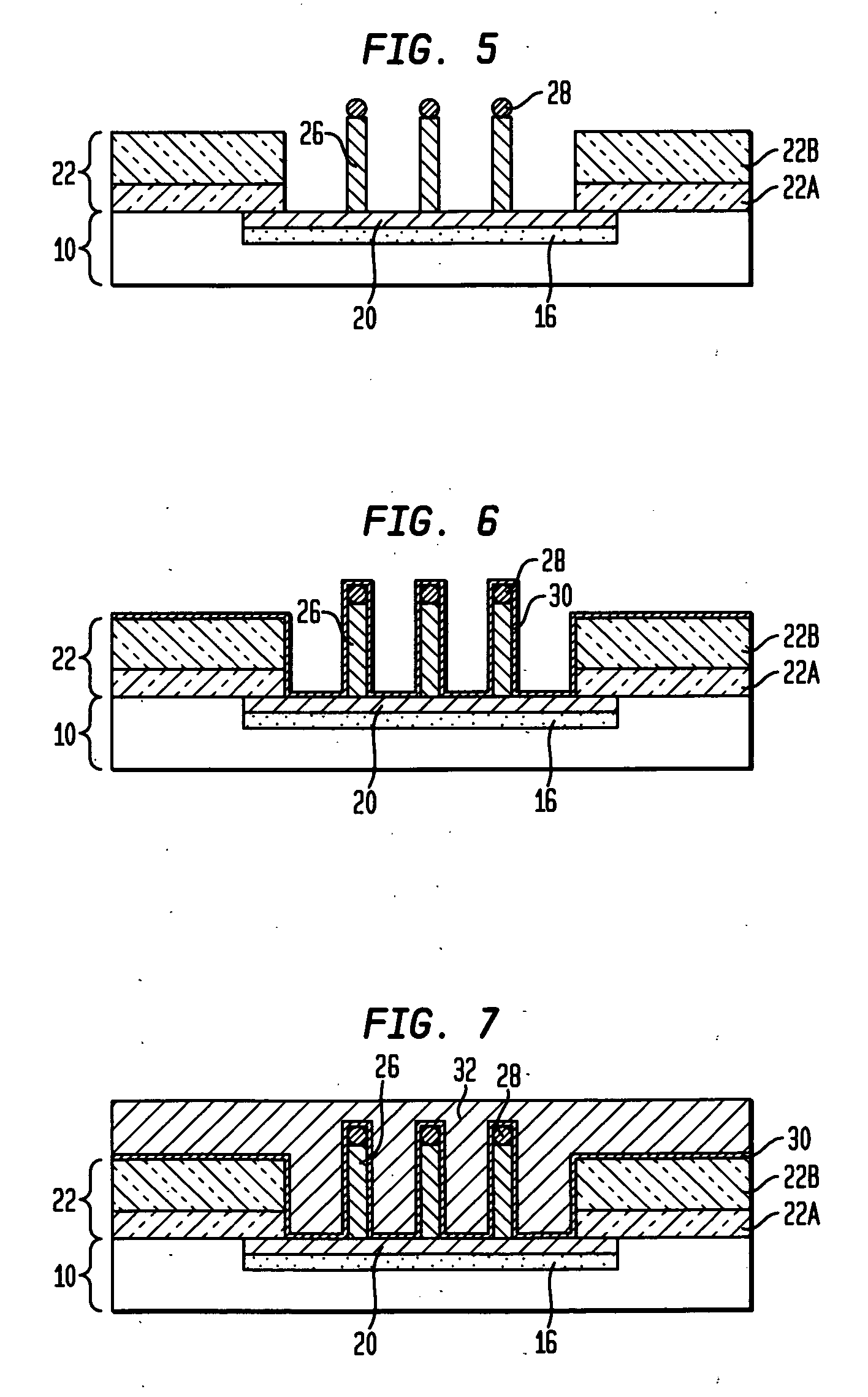Vertical FET with nanowire channels and a silicided bottom contact
- Summary
- Abstract
- Description
- Claims
- Application Information
AI Technical Summary
Benefits of technology
Problems solved by technology
Method used
Image
Examples
Embodiment Construction
[0021] The present invention, which provides a vertical FET with nanowire channels as well as methods for fabricating the same, will now be described in greater detail by referring to the following discussion. In this discussion, reference will be made to various drawings that illustrate embodiments of the present invention. Since the drawings of the embodiments of the present invention are provided for illustrative purposes, the structures contained therein are not drawn to scale.
[0022] It is again emphasized that the method of the present invention is described using silicon nanowires and silicon processing. The inventive method can also be practiced with other semiconductors such as Ge or III-V semiconductors. When non-Si-containing semiconductors are used, the processing steps of the present invention are basically the same except that a layer of Si can be formed atop the non-semiconductor surface prior to forming the silicide contact layer. Use of Si-containing semiconductor m...
PUM
 Login to View More
Login to View More Abstract
Description
Claims
Application Information
 Login to View More
Login to View More - R&D
- Intellectual Property
- Life Sciences
- Materials
- Tech Scout
- Unparalleled Data Quality
- Higher Quality Content
- 60% Fewer Hallucinations
Browse by: Latest US Patents, China's latest patents, Technical Efficacy Thesaurus, Application Domain, Technology Topic, Popular Technical Reports.
© 2025 PatSnap. All rights reserved.Legal|Privacy policy|Modern Slavery Act Transparency Statement|Sitemap|About US| Contact US: help@patsnap.com



